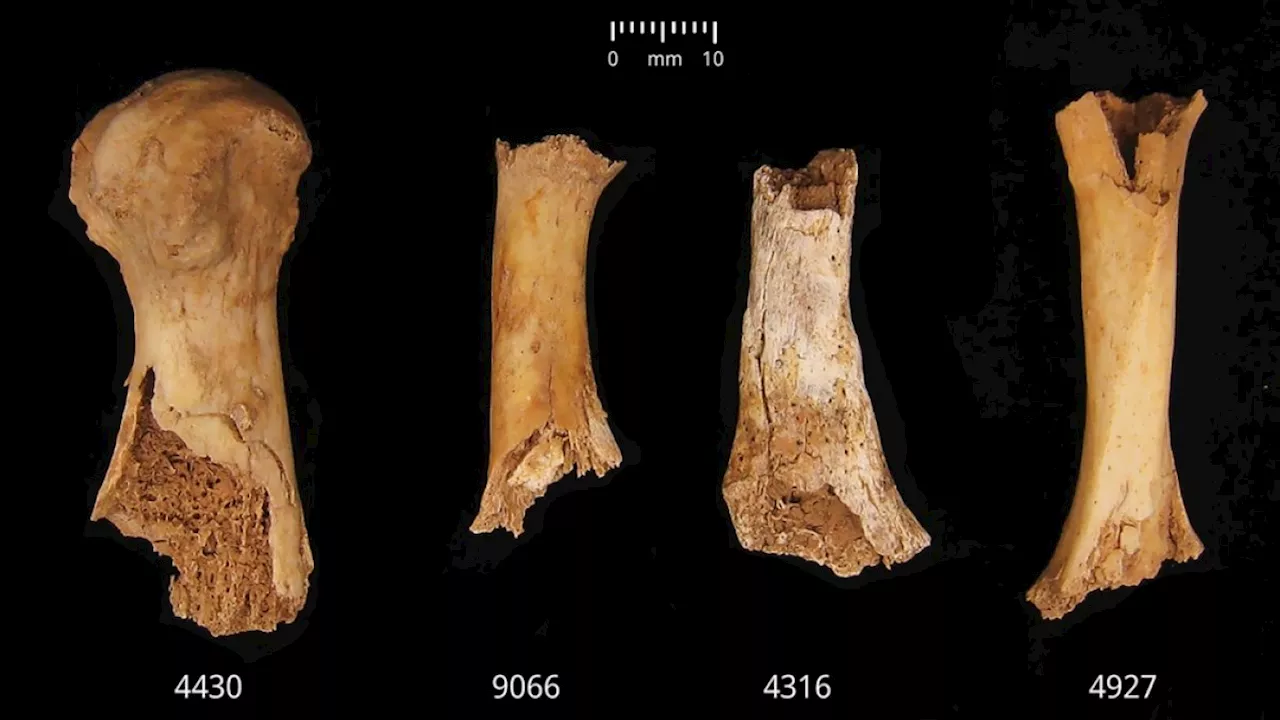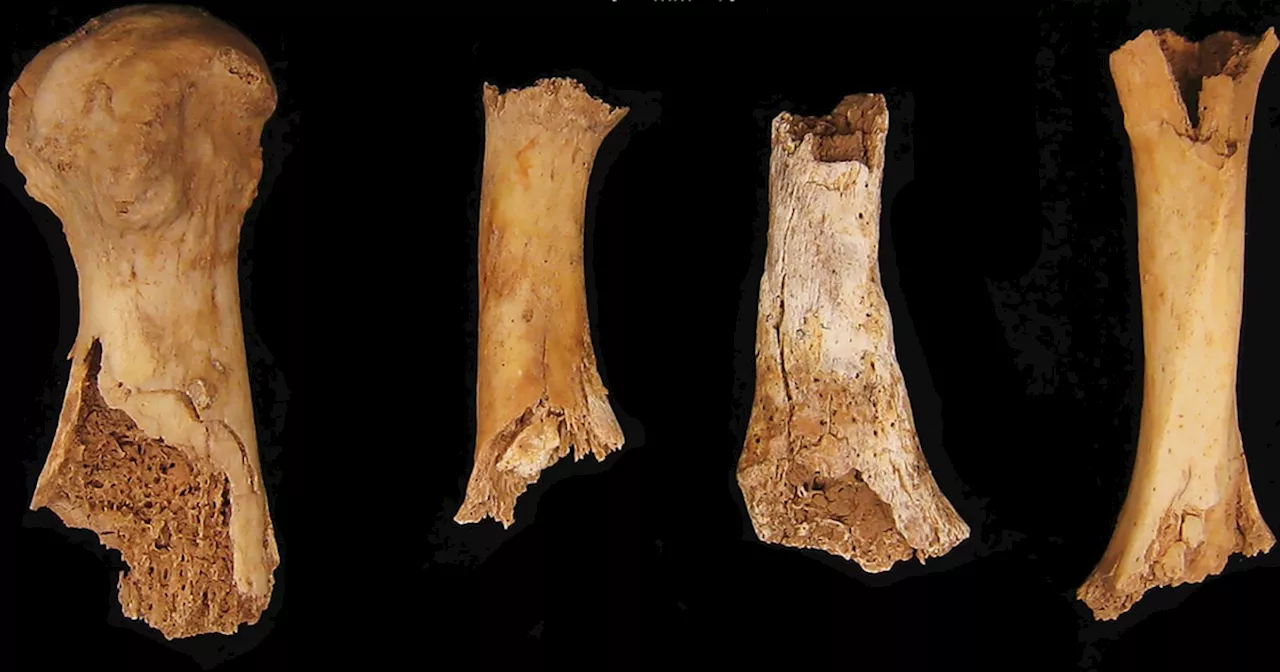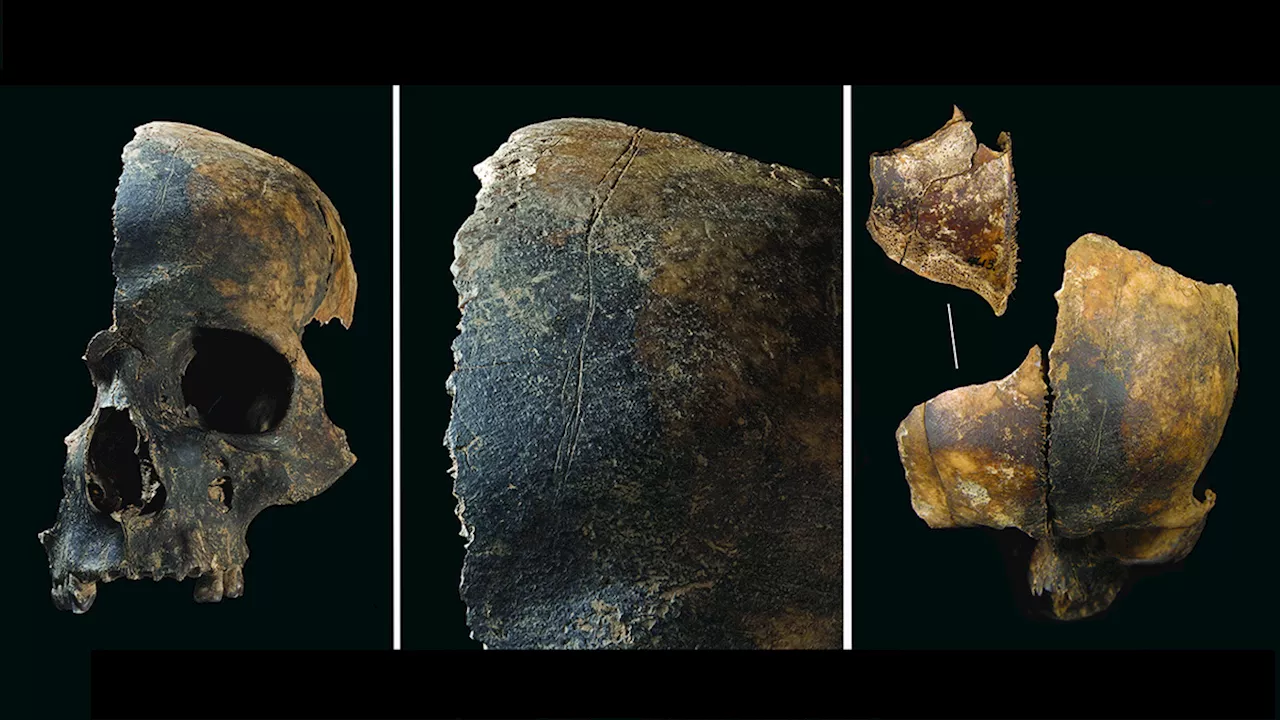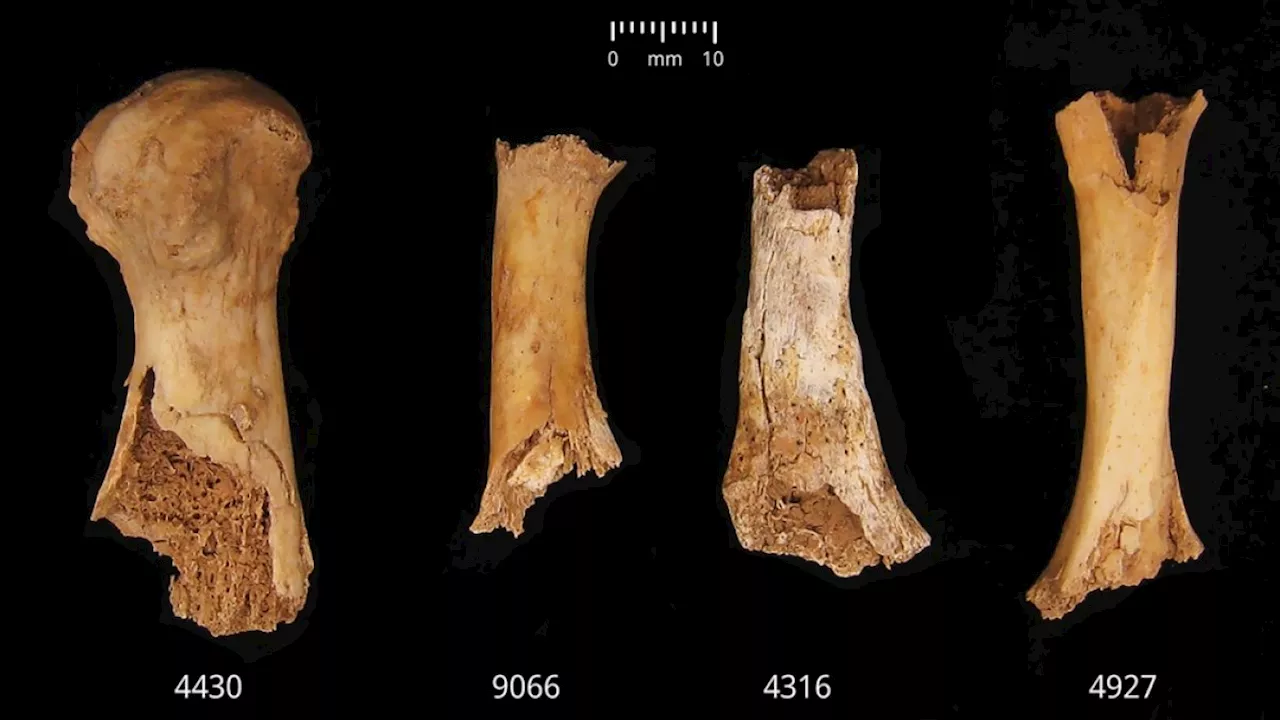An excavation in Brittany, France, has uncovered a trove of Bronze Age artifacts, including a distinctive golden ring and evidence of an ancient trade route.
An excavation of a Bronze Age settlement in northwestern France has revealed a remarkable golden ring, swords, and a handful of other intriguing objects from the time. INRAP— France ’s National Institute for Preventative Archaeological Research—led the excavation, which took place in Brittany. The site contains Bronze Age artifacts but shows evidence of consistent settlement through the 10th century.
The excavation turned up vases, terra cotta fragments, swords, coins, and a distinctive golden ring. Moreover, the recent work suggests the site was part of an ancient trade route that handled goods from across the continent. During the excavation, INRAP archaeologists found a strip of quartz pebbles about 26 feet wide (8 meters wide) they determined to be an ancient road. The sides of the road were delimited by ditches, and the archaeologists identified traces of ruts in the quartz made by wheeled vehicles. According to an INRAP release, the road likely dates to between the beginning of the second century and was used through the fourth century.The gold ring (shown above) was found on that road, and dates to roughly the same time period. The ring is a, identifiable by the figure cut into the stone. According to the INRAP release, the figure on the ring may be Venus Victrix, who manifests victory for the wearer. Later, the INRAP team found evidence that a settlement existed on the site between the 5th and 10th centuries, and peaked between the 7th and 8th centuries. The dozen Carolingian denarii (shown at the top of the article) date to the 9th or 10th centuries. Though no structures remain at the site, the researchers identified quadrangular plots across the site separated from each other by ditches. Though some plots seemed to contain buildings, others were used for other purposes, including growing crops and used for pastur
BRONZE AGE FRANCE ARCHAEOLOGY ANCIENT ROAD GOLDEN RING
United States Latest News, United States Headlines
Similar News:You can also read news stories similar to this one that we have collected from other news sources.
 Bronze Age British Ate Their Enemies According to Gruesome DiscoveryThe Best in Science News and Amazing Breakthroughs
Bronze Age British Ate Their Enemies According to Gruesome DiscoveryThe Best in Science News and Amazing Breakthroughs
Read more »
 Bronze age Britons were cannibalized after an ‘exceptionally violent' attackThe aftermath of an “exceptionally violent” attack in early Bronze Age England reveals a case of cannibalism, according to a new study.
Bronze age Britons were cannibalized after an ‘exceptionally violent' attackThe aftermath of an “exceptionally violent” attack in early Bronze Age England reveals a case of cannibalism, according to a new study.
Read more »
 Mass Cannibalism in Bronze Age England: 37 People 'Systematically Dismembered and Eaten'New research reveals an exceptionally violent attack in early Bronze Age England where at least 37 individuals were systematically dismembered and eaten. The discovery of over 3,000 bones in a 50-foot pit in Charterhouse Warren suggests a case of cannibalism and offers a glimpse into the darker side of human prehistory. Researchers suggest the attack took place around 4,000 years ago and involved multiple individuals killed by blows to the head before being dismembered and defleshed.
Mass Cannibalism in Bronze Age England: 37 People 'Systematically Dismembered and Eaten'New research reveals an exceptionally violent attack in early Bronze Age England where at least 37 individuals were systematically dismembered and eaten. The discovery of over 3,000 bones in a 50-foot pit in Charterhouse Warren suggests a case of cannibalism and offers a glimpse into the darker side of human prehistory. Researchers suggest the attack took place around 4,000 years ago and involved multiple individuals killed by blows to the head before being dismembered and defleshed.
Read more »
 4,000-year-old bones reveal 'unprecedented' violence — tongue removal, cannibalism and evisceration in Bronze Age BritainKristina Killgrove is a staff writer at Live Science with a focus on archaeology and paleoanthropology news. Her articles have also appeared in venues such as Forbes, Smithsonian, and Mental Floss. Killgrove holds postgraduate degrees in anthropology and classical archaeology and was formerly a university professor and researcher.
4,000-year-old bones reveal 'unprecedented' violence — tongue removal, cannibalism and evisceration in Bronze Age BritainKristina Killgrove is a staff writer at Live Science with a focus on archaeology and paleoanthropology news. Her articles have also appeared in venues such as Forbes, Smithsonian, and Mental Floss. Killgrove holds postgraduate degrees in anthropology and classical archaeology and was formerly a university professor and researcher.
Read more »
 Mass Grave Reveals Brutal Violence in Early Bronze Age BritainA mass grave discovered in Charterhouse Warren reveals the brutal violence inflicted on over 3,000 individuals in the Early Bronze Age. The discovery suggests a single event of extreme violence with victims killed and systematically dismembered.
Mass Grave Reveals Brutal Violence in Early Bronze Age BritainA mass grave discovered in Charterhouse Warren reveals the brutal violence inflicted on over 3,000 individuals in the Early Bronze Age. The discovery suggests a single event of extreme violence with victims killed and systematically dismembered.
Read more »
 Ancient Massacre Site Reveals 'Sheer Extent' of Bronze Age ViolenceArchaeologists excavating a 50-foot pit in Charterhouse Warren, England, unearthed over 3,000 bones showing signs of extreme violence. The findings suggest a massacre took place between 2210 B.C. and 2010 B.C., a unique event in Early Bronze Age Britain.
Ancient Massacre Site Reveals 'Sheer Extent' of Bronze Age ViolenceArchaeologists excavating a 50-foot pit in Charterhouse Warren, England, unearthed over 3,000 bones showing signs of extreme violence. The findings suggest a massacre took place between 2210 B.C. and 2010 B.C., a unique event in Early Bronze Age Britain.
Read more »
